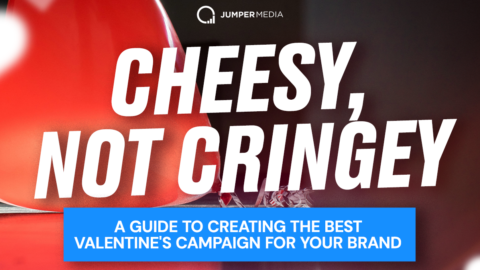Imagine this scenario:
You’re about to buy a new vacuum.

You’ve whittled it down to two options and have checked and rechecked the stats –everything looks good with both of them.
So how do you choose which one to buy?
If you’re like most other people, you’ll head straight to the reviews section to see what previous customers have to say. Vacuum #1 has 17 five-star reviews and positive comments all over the shop, while vacuum #2 has just 5 reviews–and one of them’s just two-stars.
Now the choice seems pretty easy, right? You click buy on vacuum #1 and, within a week, you’re happily keeping your carpets dust-free.
Today, reviews are one of the most important parts of the buying process, with 9 out of 10 customers looking for online reviews created by actual customers before they hit the buy button.
Reviews and other content created by customers is known as ‘social proof’ in the marketing world.
What is Social Proof?
Let us elaborate on this whole proof thing.

Source
It’s essentially the idea (that has been gaining more traction in recent years) that customers make purchase decisions based on what other people have to say.
It kind of works as a modern-day version of traditional word-of-mouth marketing, which is when you decide on a product based on information from peers rather than shiny, well-polished marketing campaigns.
In action, social proof looks like reviews on product pages, websites that show the number of previous customers, and user-generated content from past buyers — all of which serve the purpose of pushing potential buyers down through the sales funnel.
But how does this work for Facebook ads?
When someone scrolls through their feed and comes across your ad, they’re not just looking at the pretty picture and your amazingly compelling copy–they’re noticing everything, from how many people have liked your ad to the number of comments and the comments themselves.

Source
Most of this isn’t even conscious. Users are looking for indicators that others before them have liked the ad — a.k.a. they’re looking for social proof or public social engagement that other users can see.
The likes, comments, and shares on your ad might seem like small, trivial bonuses, but they actually matter just as much as your caption and the picture you spent hours pairing.
When you tear it down to its core, social proof does three key things:
- Builds trust with new prospects,
- Adds credibility to your ads.
- Validates your customers’ buying decision and makes it easy for them to choose you. (Remember the vacuum story above, where the decision became a no-brainer as soon as you checked out the reviews?)
This is why Facebook ads with social proof generate 300% more conversions and have 50% lower cost per clicks (CPCs).
Wait, social proof also lowers the cost of your ads?
It’s because there’s actually a hidden benefit to it. All the engagement you get from the comments and likes boosts your relevance score which, in turn, gives you a higher priority in the ads bidding system.
Why Social Proof Works (The Psychology Behind It)
The psychology of social proof’s effectiveness is fascinating, taking us back to the basic instincts we have as human beings.
Think about it:

We’re social creatures, which means that our decisions are often heavily influenced by the people around us. Basically, we don’t want to stand out and draw attention to ourselves or take reckless risks, so we conform to the norm
In fact, this innate drive in us is so powerful that we will even go against what we think is right just to fit in. German philosopher Friedrich Nietzsche actually tested this with his idea of the, “Herd Morality,” which basically taps into the notion that people will sometimes throw aside their own views to align with group instincts.
Even despite those times we’re fooled by groupthink, it’s normal and automatic to assume that if most people are doing things one way, there must be a good reason for it.
Social media really brings out our hive mind. Today, this is often referred to as FOMO (fear of missing out), and is apparent in the way consumers scramble around for the “next big thing.” When looking at it from an ad perspective, if an ad gets 500 likes and 400 shares, people want to know why — it’s just human nature. If you see a crowd, you want to know what they’re gathered around.

Source
On top of this, trust is such an important factor for consumers today. In a world where so many transactions are carried out through the anonymity of a screen, having that sense of trust and credibility can work wonders for deepening connections with your audience.
The science is simple: people trust a brand more if previous buyers have shown their love in the form of reviews, comments, likes, and shares. And, more often than not, that trust translates directly into clicks and conversions.
So how can you pepper your ads with social proof? We’ve got some tricks up our sleeve for you.
How to Use Social Proof in Your Facebook Ads

Source
1) Use Testimonials and Reviews in Your Ad Copy
There are three key parts to the visual of your ad:
- The image
- The headline
- The copy
You get the best results when these three things work together in tandem, and one of the easiest ways to inject a hearty dose of social proof into your ads is to insert customer reviews or testimonials into your ad copy.
While this doesn’t boost your likes or comments (not initially, anyway), it still shows that your previous customers have had a great experience with you which, in turn, will intrigue new prospects who will want to know what all the buzz is about.

Take this example from Infusionsoft, featuring a quote by a previous customer in the body of their ad copy. They’ve cemented the social proof here with a picture of the person the quote is from (and, as you can see, the ad has generated a lot of traction in the form of shares, likes, and comments).
2) Use Different Kinds of Social Proof for Different Parts of the Funnel
Not all consumers are equal — not when it comes to where they are in the buying cycle, anyway. When you’re advertising on social media, it’s important to target the right people at the right time with the right message.
It sounds like hard work, but if you pinpoint the various points in the funnel and create ads based around the behavior of consumers at that stage, you can create something really effective.

For example, you might showcase reviews of your top-selling products to attract first-time visitors with specific items. You know these products sell well, so why wouldn’t new prospects want a slice of the action?
But, when they go to your site and don’t buy, what do you do then?
After that, you can retarget them with ads that show reviews of your brand rather than product-specific ones. This helps you emphasize the credibility and authenticity of your whole line, rather than one product, which will reinforce the idea that your brand is the best one to buy from.
3) Make it Personal
The whole idea behind using social proof in your Facebook ads is showing real experiences from real people that have bought from you in the past.
Instead of adding a review that says something like “shipping was quick and the product was high quality,” you want to drill down into the stories and experiences your previous customers have had.

To do this, you can use personal pronouns which act as a psychological cue to tell us stories are authentic. Featuring reviews that are packed with “I,” “my,” or “we” are far more effective than ads that don’t refer to personal experiences.
Jumper Media’s content creation services help your company or small business stay relevant in today’s social, digital world.
Find out about our Social Media Content Creation Services.
4) Show the Exact Numbers
If you really want to convince consumers that you’re the right brand for them, use precise numbers.
We’re talking numbers like the amount of downloads you’ve already had on your ebook or the number of people who receive your email newsletter each week — be really specific here, because research has shown that this is super effective.

Take AdEspresso, for example. They ran an experiment where they created three ads that were the same apart from one thing: one ad didn’t have the number of downloads, one ad rounded down the number, and one ad showed the exact number.
Guess which one got the best results?
If you said the third ad that had the exact number of downloads, give yourself a pat on the back.
5) Integrate User Generated Content (UGC)
Reviews aren’t your only social proof tool. If your customers have ever shared photos and videos of your product, you have a well of conversion-powered ad elements to tap into.
To really show how effective UGC can be in Facebook ads, one agency conducted an experiment with two versions of an ad. One version featured highly-polished stock images of the product, and the other featured an image created by a previous customer.

The ads were run for big brands Nike and Zara, and the results were fascinating:
The Nike ads that featured UGC images gained 3x as many click-throughs than the stock photo versions, and Zara’s UGC ads had 2.5x more clicks.
Get Social With Your Facebook Ads
As you can see, social proof can be an incredibly simple but powerful addition to your Facebook ads. You can tap into the tribe mentality that still drives us as humans, and tempt new prospects using the stories of past buyers.

Social media is a great place to build connections and attract new buyers. According to J. Crew, “customers who engage with us via our social media outlets generally spend approximately 2.5x more than the average J. Crew customer.”
As well as handpicking key testimonials, reviews, and UGC, you can also try using social proof tools to pull in customer quotes for your ads.
Whichever way you look at it, there’s no time like the present to put pressure on consumer-led FOMO to build trust and generate more click-throughs.


